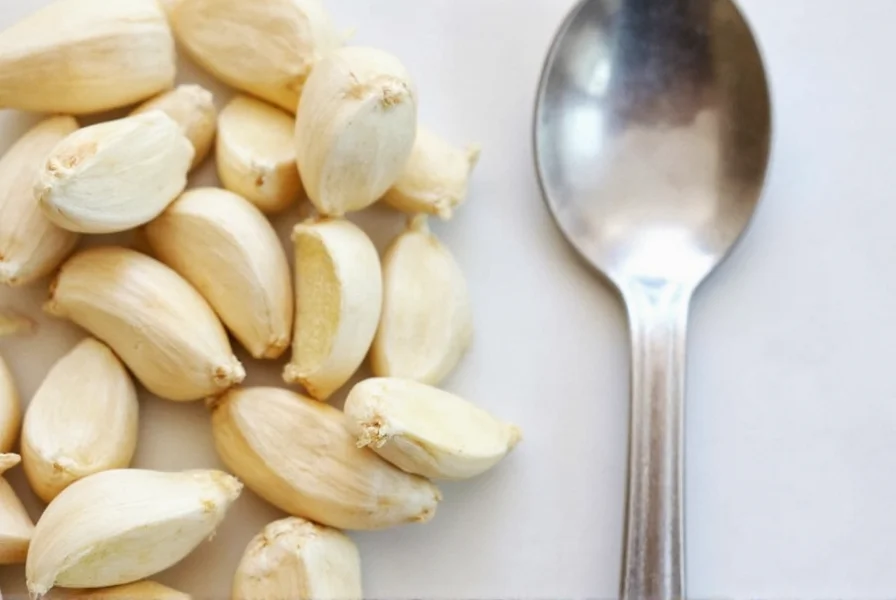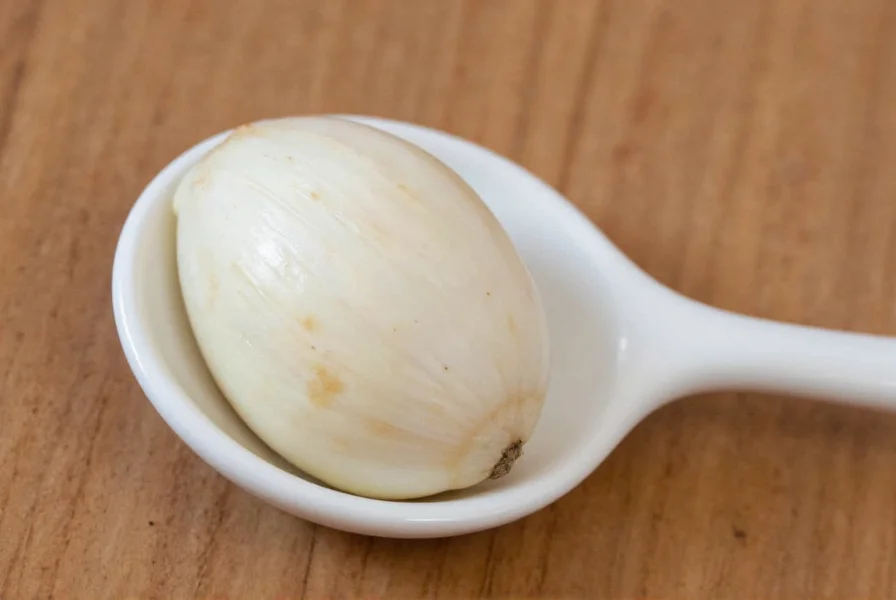When following recipes that specify garlic measurements in teaspoons rather than cloves, understanding the exact conversion is essential for achieving balanced flavors in your dishes. The relationship between garlic cloves and teaspoon measurements isn't fixed due to natural variations in garlic bulb size, growing conditions, and preparation techniques.
Understanding Garlic Clove to Teaspoon Conversion
Garlic cloves vary dramatically in size depending on the variety and growing conditions. A single head of garlic can contain cloves ranging from tiny immature pieces to large robust sections. This natural variation directly impacts how much minced garlic you'll get from each clove.
| Garlic Clove Size | Minced Garlic Yield | Garlic Paste Equivalent |
|---|---|---|
| Small (½" long) | ¼ teaspoon | ⅛ teaspoon |
| Medium (¾" long) | ½ teaspoon | ¼ teaspoon |
| Large (1"+ long) | 1 teaspoon | ½ teaspoon |
| Jumbo (1½"+ long) | 1½ teaspoons | ¾ teaspoon |
This garlic measurement chart provides precise conversions for various clove sizes. When working with fresh garlic, always measure after mincing for the most accurate results, as compression during mincing affects volume.

Factors Affecting Garlic Measurement Accuracy
Several variables influence how many teaspoons equal one garlic clove in your specific cooking situation:
- Preparation method: Minced garlic yields more volume than garlic paste, which is compressed during preparation
- Moisture content: Freshly harvested garlic contains more moisture than cured garlic, affecting density
- Age of garlic: Older garlic heads often produce drier, less plump cloves
- Measurement technique: How tightly you pack the minced garlic into the teaspoon significantly impacts volume
Practical Substitution Guidelines for Recipes
When converting between fresh garlic cloves and measured teaspoons in recipes, consider these professional kitchen tips:
For most standard recipes calling for "1 clove garlic," use ½ teaspoon of freshly minced garlic as your baseline measurement. If the recipe specifies "large clove," increase to ¾ teaspoon, and for "small clove," reduce to ¼ teaspoon.
When substituting jarred minced garlic for fresh cloves, remember that commercial products often contain preservatives that affect potency. Generally, use ½ teaspoon of store-bought minced garlic per medium fresh clove, but taste as you go since preservation methods vary by brand.

Advanced Garlic Measurement Techniques
Professional chefs employ several techniques to ensure garlic measurements remain consistent regardless of clove size variations:
- Weight-based measurement: For precision baking or sauce making, weigh minced garlic (1 medium clove ≈ 3 grams)
- Flavor balancing: Always taste before finalizing garlic amounts, especially when converting between fresh and preserved forms
- Timing considerations: Add minced garlic later in cooking than whole cloves to prevent burning, as smaller pieces cook faster
Understanding how many teaspoons equals 1 clove of garlic becomes particularly important when scaling recipes up or down. For large-batch cooking, measure all your garlic after mincing rather than counting individual cloves to maintain consistent flavor profiles across multiple servings.
Common Garlic Measurement Mistakes to Avoid
Many home cooks make critical errors when converting garlic cloves to teaspoon measurements:
- Assuming all cloves from a single head yield identical amounts
- Measuring before mincing rather than after
- Not accounting for how tightly garlic is packed into the measuring spoon
- Using dried garlic powder measurements for fresh garlic conversions
For the most accurate results when determining how much minced garlic equals one clove, always measure after preparation using the spoon-and-level method common in professional baking—fill the spoon then level off excess with a straight edge.










 浙公网安备
33010002000092号
浙公网安备
33010002000092号 浙B2-20120091-4
浙B2-20120091-4